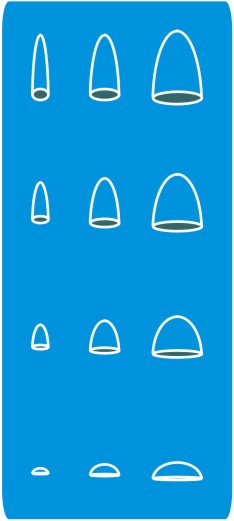 Jellyfish morphology
Jellyfish morphology
|
|
|
|
|

As zooplankton, medusae live up in the water column (except for Cassiopia) and are faced with the problem of how to interact with the fluid around them effectively enough to successfully move, capture food, avoid being eaten and reproduce for survival. Many different solutions have evolved over the last 500 million years. The multitude of bell shapes and tentacle arrangements of jellyfish illustrate these solutions.
Bell form reveals a lot about a medusa. The shape of a medusan bell affects how the medusa interacts with the fluid as it swims. In turn, these interactions determine the medusae's propulsive mode, swimming efficiency and even foraging strategy. However, shape does not come without restrictions and some bell shapes appear to limit the size that medusae can grow.
There almost seems to be as many tentacle arrangements among jellyfish as there are species. The tentacles of different jellies vary in their numbers, lengths and thickness. They vary in their positions and rigidity. And they vary in the types, sizes and densities of nematocysts (stinging cells) that they possess. While the organizing principles for tentacle morphology have yet to be completely revealed, tentacle morphology and placement clearly affect the encounter rates with food items and the ability of the jelly to capture and retain different types of food.
Finally, medusae also exhibit a lot of variety in the morphology of their guts. While gut morphology is often not considered to determine feeding strategy, gut capacity and digestive times are primary determinants of feeding rates in different food environments.


